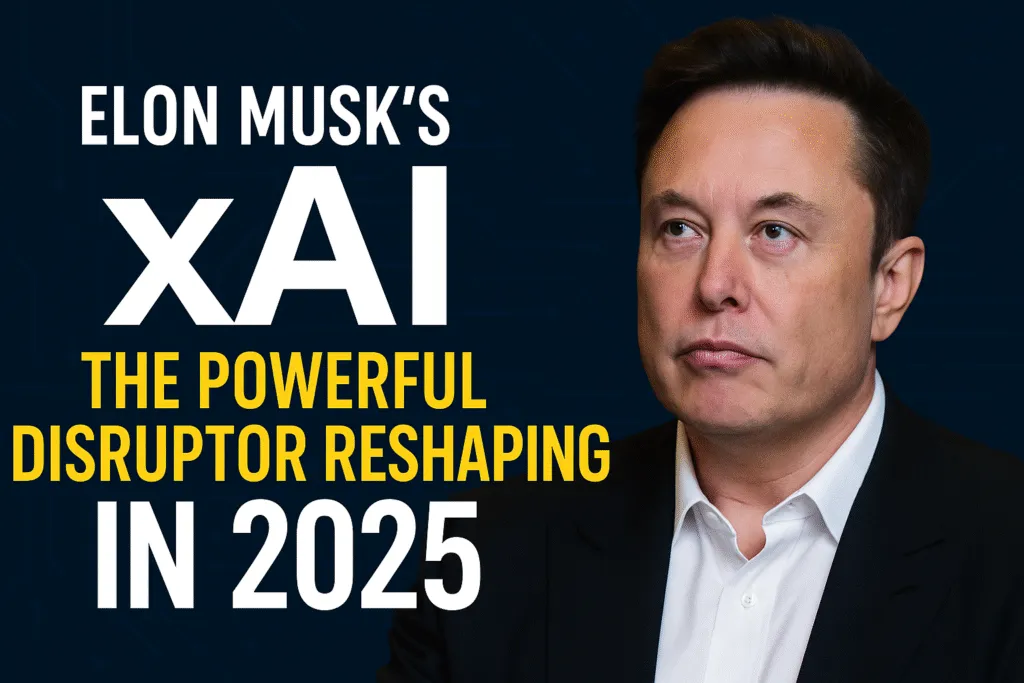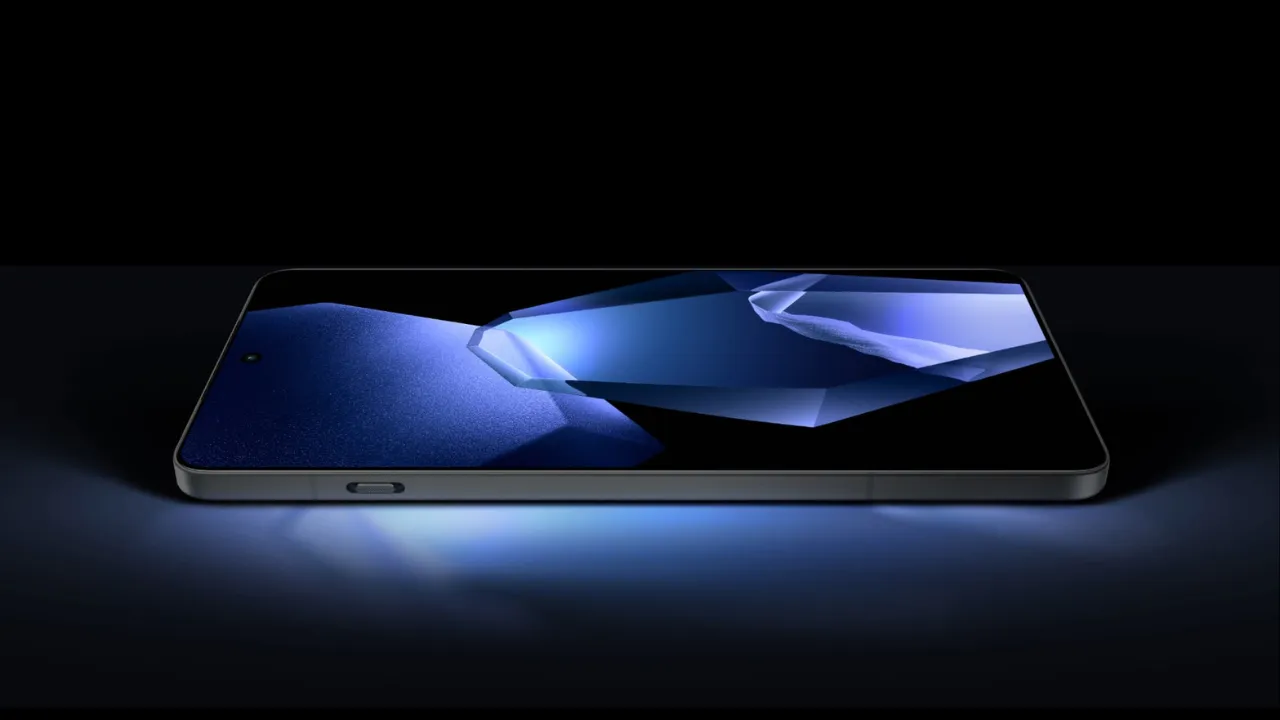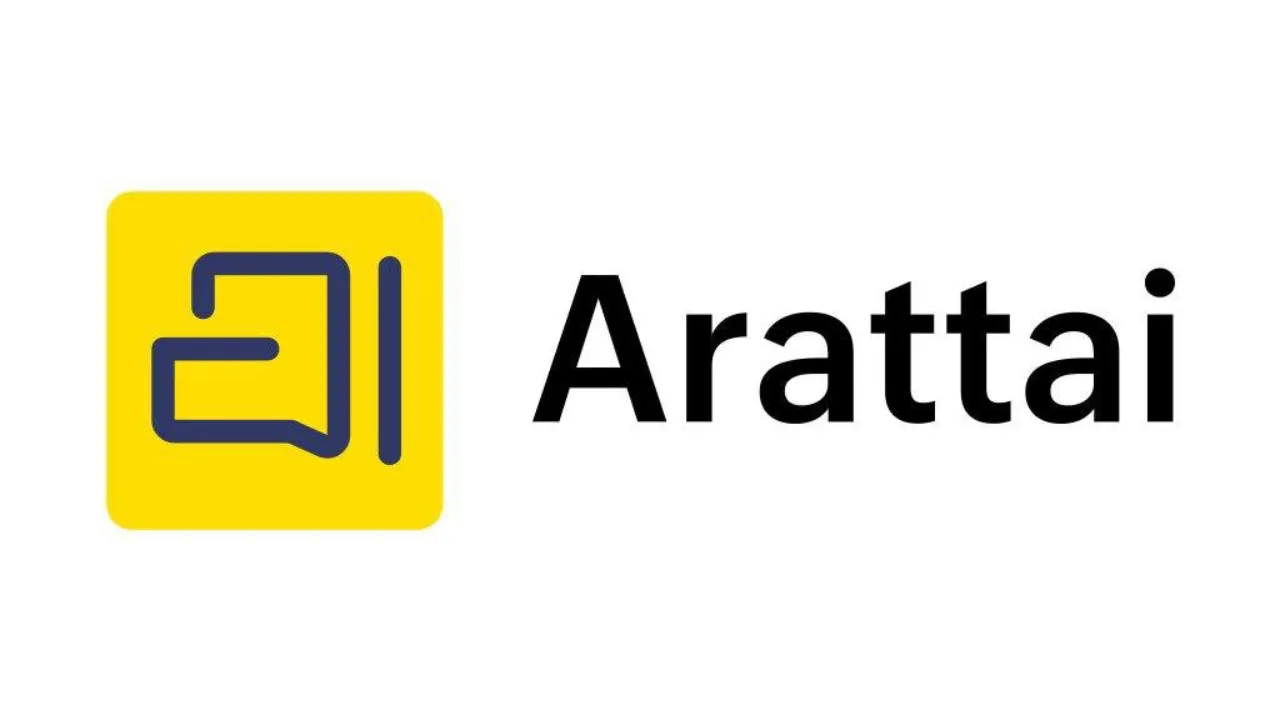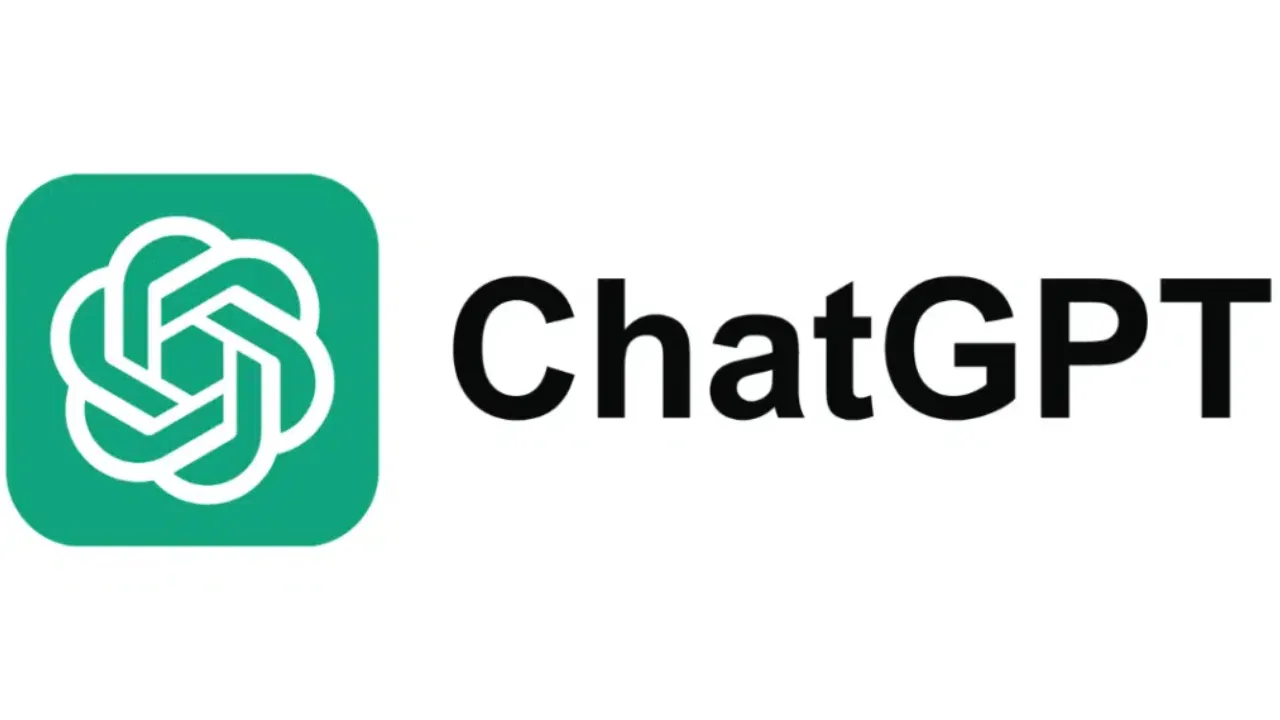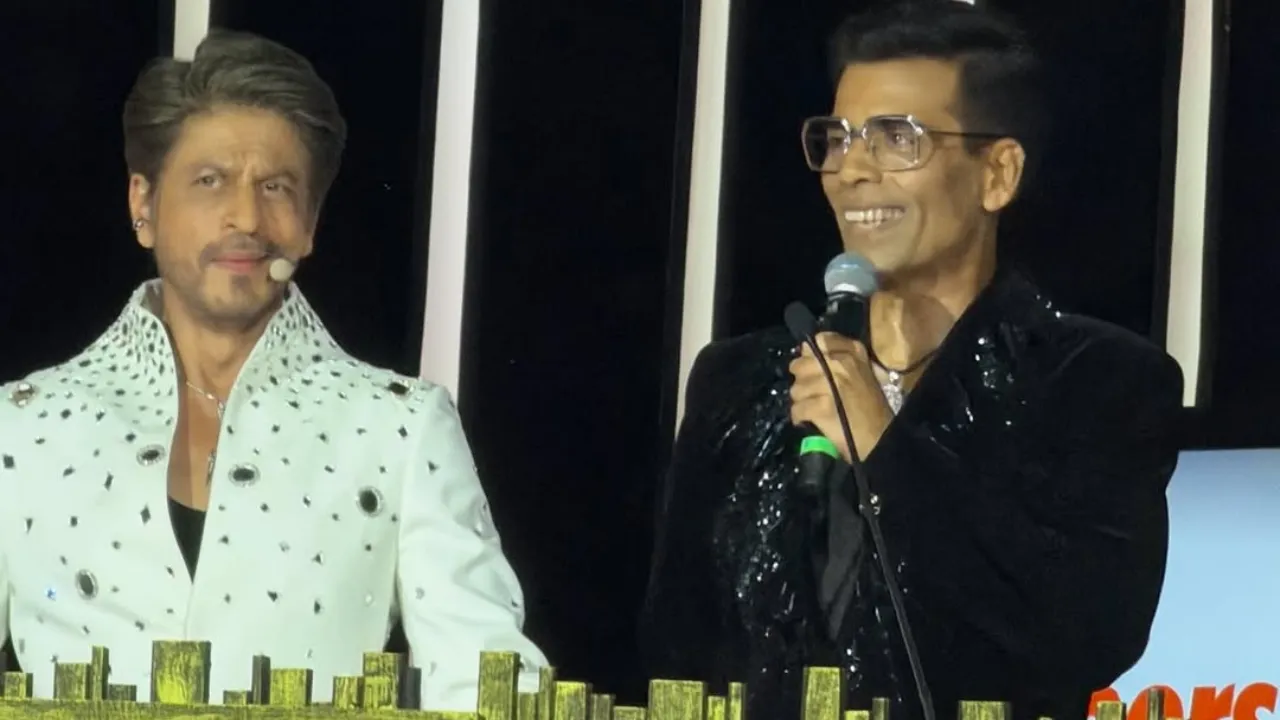Introduction – Why xAI Is Making Headlines in 2025
In 2025, one name is dominating the global tech conversation like never before — Elon Musk’s xAI. Launched with the vision to create a more transparent and truth-seeking artificial intelligence, xAI is quickly becoming a major force in the AI race. From integrating with Tesla and X (formerly Twitter) to challenging the dominance of OpenAI and Google DeepMind, this new player is changing the game.
So why is Elon Musk’s xAI making so many headlines? Elon Musk’s xAI (official site) was launched with the bold promise of creating truth-seeking AI.
First, it’s not just another AI chatbot company. Musk claims xAI aims to build AI that seeks “maximum truth” and avoids political or biased outputs. That’s a bold statement in a world where concerns about misinformation, censorship, and AI bias are growing. This vision has attracted both massive support and strong criticism, making xAI a lightning rod in today’s digital landscape.
Secondly, xAI is backed by some of the brightest engineers from OpenAI, Google, and Tesla. It has released its own AI model, Grok, which is directly integrated with X (Twitter) — giving it instant access to real-time data. That alone gives it a unique edge over competitors like ChatGPT, which rely on older datasets.
Finally, Musk’s massive following and strong opinions on AI safety, free speech, and technology ethics have added fuel to the buzz. Whether you agree with him or not, it’s clear that Elon Musk’s xAI is not just a side project — it’s a serious challenge to the current AI status quo.
As 2025 unfolds, all eyes are on what xAI will do next — and how it will reshape the future of artificial intelligence.
What Is xAI? A Quick Overview of Elon Musk’s AI Venture
Elon Musk’s xAI is a new artificial intelligence company founded in 2023 with one bold mission — to understand the “true nature of the universe.” While that may sound ambitious, xAI’s real goal is to create advanced AI models that are truthful, unbiased, and aligned with human values.
Unlike traditional AI companies that focus mainly on chatbots or productivity tools, xAI is being built as an independent research organization with a long-term vision. The team includes top engineers and scientists who previously worked at OpenAI, Google DeepMind, Tesla, and Microsoft.
One of the company’s first products is Grok, an AI chatbot that competes directly with tools like ChatGPT and Gemini. What makes Grok unique is that it’s integrated with X (formerly Twitter), giving it live access to real-time information and user interactions. This gives it a serious edge in answering current and trending questions faster than most other AI tools.
xAI is also closely tied to Elon Musk’s larger tech ecosystem. It works alongside companies like Tesla (for self-driving tech), Neuralink (for brain-computer interfaces), and X (for social data and user feedback). This interconnected setup allows xAI to test and implement AI across industries — from transport and robotics to communication and education.
In short, Elon Musk’s xAI isn’t just about building another chatbot. It’s a long-term project aiming to redefine how artificial intelligence works, who controls it, and how much truth it should tell. Whether you see it as visionary or controversial, xAI is clearly one of the most talked-about AI ventures of our time. According to TechCrunch, Elon Musk’s xAI recently launched an API for Grok 3—its flagship model integrated with real-time data—marking a significant milestone in 2025
How xAI Is Different from OpenAI, Google DeepMind, and Others
In 2025, artificial intelligence is led by a few dominant players — OpenAI, Google DeepMind, Anthropic, and Meta. But a new name, Elon Musk’s xAI, is disrupting the AI space with a radically different approach. Unlike its competitors, xAI brings a strong focus on truth, real-time data, and integration with Musk’s wider tech empire.
Here’s how xAI stands out from the rest:
1. A Mission Built on “Maximum Truth”
While most AI labs focus on safety, neutrality, and user satisfaction, Elon Musk’s xAI is driven by a different vision — building an AI that seeks truth above all.
Musk believes many mainstream AI models avoid controversial questions or give “safe” answers to avoid criticism. xAI, however, is designed to challenge bias and censorship. According to Musk, AI should not be politically correct — it should be honest, transparent, and reflect multiple perspectives, even on difficult topics.
This sets it apart from tools like ChatGPT or Gemini, which prioritize content safety and brand neutrality.
2. Real-Time Access via Integration with X (Twitter)
One major advantage of xAI is its tight integration with X (formerly Twitter). Unlike OpenAI’s ChatGPT or Google’s Gemini, which are trained on static datasets and update periodically, xAI has direct access to live conversations, trending topics, and global events via X.
This allows xAI’s models (like Grok) to give more current, relevant answers — especially in breaking news, politics, or culture — making it more dynamic than most traditional AI tools.
3. Independent from Big Tech Influence
Companies like OpenAI are heavily funded by Microsoft, while DeepMind operates under Google. These partnerships often bring funding and compute power, but also influence and control over what the AI can or cannot say.
Elon Musk’s xAI, in contrast, is designed to be more independent. Though it collaborates with Tesla and X, it doesn’t operate under Big Tech giants like Microsoft or Google. This allows it more flexibility to build models based on Musk’s vision — without needing to conform to external policies or pressures.
4. Built with Talent from AI Industry Leaders
xAI has recruited top engineers from OpenAI, Google DeepMind, and Microsoft — people who helped build the very systems it now competes with. This gives xAI deep technical expertise, allowing it to scale up quickly and compete with more established players despite being relatively new.
5. Philosophical Stand on AI Regulation
While many companies cooperate closely with governments and global AI safety boards, Elon Musk has warned against overregulation. He supports the need for AI governance but also believes in transparency and open debate. xAI reflects this mindset — balancing innovation with public input rather than closed-door policies.
In short, Elon Musk’s xAI isn’t just a technical competitor — it’s a philosophical shift in how AI should be built and why. Whether that makes it revolutionary or risky is still being debated, but it’s clear that xAI is carving its own path in the crowded AI space.
Key Technologies Behind xAI’s Advancements
Behind the bold claims and unique philosophy of Elon Musk’s xAI lies a powerful foundation of cutting-edge technology. While many AI companies use similar underlying tools — like large language models and neural networks — xAI is leveraging specific strategies and systems that give it a competitive edge in 2025.
Let’s explore the key technologies that drive xAI’s rapid growth.
1. Large Language Models (LLMs) with Real-Time Data Integration
xAI’s AI chatbot, Grok, is powered by a large language model, much like ChatGPT or Claude. However, the key difference is real-time access. Unlike competitors that rely on static datasets updated every few months, Grok is trained to pull data directly from X (formerly Twitter), giving it access to fresh and trending content.
This real-time integration allows Grok to answer questions with current facts, live news, and public sentiment — something most traditional LLMs cannot do efficiently.
2. High-Performance Compute Using Tesla’s Dojo Supercomputer
Elon Musk’s xAI benefits from Tesla’s massive computing infrastructure, especially the Dojo supercomputer, which is built for high-speed machine learning tasks. Dojo was originally designed for training autonomous driving systems but is now playing a role in training xAI models.
This access to custom AI hardware gives xAI an advantage in scalability and cost-efficiency compared to AI companies that depend solely on cloud services like Azure or Google Cloud.
3. Reinforcement Learning with Less Human Bias
Most AI models today use Reinforcement Learning from Human Feedback (RLHF), where AI is fine-tuned based on human preferences. However, critics argue that this introduces bias — because feedback often reflects specific political or cultural views.
Elon Musk’s xAI is experimenting with less biased reward models that aim to capture diverse viewpoints and reduce censorship. This results in more open-ended, truth-driven conversations, even on controversial or sensitive topics.
4. Native Integration Across Musk’s Ecosystem
Unlike standalone AI tools, xAI is deeply embedded across Musk’s companies:
- X (Twitter) provides conversational data and user interactions.
- Tesla contributes AI compute power and robotics applications.
- Neuralink (potentially in the future) could explore human-AI symbiosis.
This cross-platform ecosystem gives xAI access to user behavior, hardware feedback, and real-time performance data — a holistic advantage that few competitors have.
5. Custom Model Tuning and Faster Iteration Cycles
xAI’s team has built a system that allows faster model updates and testing. By continuously pulling data from X and getting live feedback from millions of users, they’re able to identify weak spots and improve response quality faster than labs working in closed environments.
This tight feedback loop means Elon Musk’s xAI can iterate and evolve at a much quicker pace, especially in fast-moving domains like politics, tech news, and pop culture.
In short, the strength of xAI isn’t just in its mission — it’s in the tech stack that powers it. With real-time data, custom compute resources, and Musk’s full ecosystem behind it, xAI is building one of the most flexible and forward-looking AI platforms in the world.
xAI’s Integration with Tesla, X (Twitter), and Neuralink
One of the biggest advantages Elon Musk’s xAI has over its competitors is its deep integration with Musk’s own tech empire. Unlike other AI companies that operate independently or rely on outside partnerships, xAI taps directly into the data, infrastructure, and user base of three of Musk’s most influential companies: Tesla, X (formerly Twitter), and Neuralink.
This cross-platform synergy gives xAI a unique edge — not just in scale, but in application. Here’s how:
1. Tesla – AI in Autonomous Driving and Robotics
Tesla has long been a pioneer in AI-driven self-driving technology. With its own neural net training, custom chips (like the Dojo supercomputer), and vast fleet of data-generating vehicles, Tesla provides xAI with access to real-world movement, object detection, and behavior data.
xAI’s AI models may eventually enhance Tesla’s Full Self-Driving (FSD) by making the system more adaptive, conversational, or even emotionally intelligent. There’s also the potential for xAI to power Tesla’s upcoming humanoid robot, Optimus, by giving it more flexible, language-capable intelligence.
2. X (Twitter) – Real-Time Data and User Feedback
One of the boldest moves by Elon Musk was integrating xAI directly into X (formerly Twitter). xAI’s chatbot Grok is already embedded into the platform, where premium users can interact with it in real time.
This gives xAI immediate access to trending topics, global conversations, memes, and public sentiment, which no other AI company has in real time. While ChatGPT and other models rely on periodic updates, xAI is constantly learning from what’s happening now — making it more responsive to current events and cultural shifts.
The integration also acts as a testing ground. With millions of users engaging with Grok, xAI can collect real-time feedback, flag errors faster, and fine-tune its responses — all while staying connected to a live audience.
3. Neuralink – The Future of Brain-AI Interaction
Though still in early stages, Neuralink — Musk’s brain-computer interface company — is likely to be a major part of xAI’s long-term vision. Neuralink aims to build devices that connect the human brain directly to computers, potentially enabling users to interact with AI through thought alone.
While there’s no direct product launch yet combining Neuralink and xAI, the possibility of human-AI symbiosis is a major talking point in Musk’s vision. If xAI powers the AI layer for Neuralink, it could mark a revolutionary step in how we communicate with machines — and how they understand us in return.
A Unique AI Ecosystem
Unlike Google, Microsoft, or Meta, which often silo their AI efforts, Elon Musk’s xAI benefits from seamless collaboration across hardware (Tesla), software (X), and experimental interfaces (Neuralink). This gives it an all-in-one ecosystem that could accelerate development and real-world testing far beyond what others can currently achieve.
In short, xAI is not just about text generation — it’s about real-world intelligence that can drive cars, answer users instantly, and maybe one day, even sync with your brain.
Read this: Elon Musk’s xAI raises $10 billion in debt and equity as it steps up challenge to OpenAI
Impact on AI Ethics and Freedom of Speech
As artificial intelligence continues to shape how we communicate, learn, and access information, the ethical responsibilities of AI developers are becoming more critical than ever. Elon Musk’s xAI, with its bold claim of pursuing “maximum truth,” sits at the center of a growing debate on where the line should be drawn between free speech and responsible AI behavior.
Here’s how xAI is stirring conversation around AI ethics and freedom of expression in 2025:
1. A Push Against Censorship and “Woke” Filters
One of Musk’s most vocal criticisms of current AI systems is that they’re too politically correct. He argues that platforms like ChatGPT or Gemini avoid certain topics or give filtered, one-sided answers to stay within “safe” boundaries.
Elon Musk’s xAI, in contrast, is designed to break those limits. Musk claims that xAI will allow the AI to express honest, unfiltered views — even on controversial topics — as long as they are rooted in logic and evidence. Supporters believe this will promote open dialogue and reduce hidden bias in AI responses.
2. Risks of Misinformation and Hate Speech
While xAI’s pro-free-speech stance appeals to many, critics worry that reducing filters could lead to the spread of harmful misinformation or toxic content. Without tight moderation, an AI model may unintentionally validate conspiracy theories, amplify hate speech, or provide misleading medical or political advice.
This creates a serious ethical dilemma: How do you build an AI that’s both honest and safe? The debate continues, and xAI’s approach will likely influence how future AI regulation develops.
3. Challenging AI Industry Norms
Most AI companies follow strict ethical guidelines aligned with institutions, governments, and academic boards. They filter outputs to protect public safety, prevent bias, and comply with laws.
xAI is challenging that model. Musk’s team argues that AI should serve the people directly — not be shaped by corporate or political agendas. This decentralization of control is seen by some as revolutionary and by others as reckless.
4. Transparency vs Control
One of the key promises of Elon Musk’s xAI is increased transparency in how its models work and make decisions. Unlike the “black box” approach of some other companies, xAI wants to make its systems explainable and open to public scrutiny — a big step for AI ethics if executed properly.
However, complete transparency may also expose the model to manipulation, misuse, or exploitation. Balancing openness with safety will be one of xAI’s biggest challenges.
A New Ethical Landscape
In the end, xAI’s impact on AI ethics and freedom of speech depends on how it navigates the fine line between expression and responsibility. Its bold mission to speak the truth, challenge biases, and embrace open dialogue makes it a leader in redefining AI’s role in society — for better or worse.
As governments, researchers, and users react to xAI’s development, one thing is clear: the conversation around ethical AI is no longer theoretical. It’s happening in real time — and Elon Musk’s xAI is right in the middle of it.
xAI vs ChatGPT: Is It a Threat or an Evolution?
In the fast-paced AI world of 2025, one of the most discussed rivalries is between Elon Musk’s xAI and OpenAI’s ChatGPT. Both are powerful AI models with advanced language capabilities, but they are built on very different philosophies, ecosystems, and goals. As xAI continues to gain traction, many wonder: is it a serious threat to ChatGPT, or simply an alternative evolution of generative AI?
Let’s break it down.
Philosophical Divide: Truth vs Safety
The biggest difference between the two lies in their core vision. ChatGPT, developed by OpenAI, is built with an emphasis on safety, neutrality, and avoiding controversial or harmful content. It uses Reinforcement Learning from Human Feedback (RLHF) to ensure its responses are aligned with accepted guidelines, ethical norms, and platform policies.
In contrast, Elon Musk’s xAI prioritizes “maximum truth” over political correctness. Musk believes that many AI systems are overly censored or biased toward certain ideologies. xAI is designed to answer questions openly — even if the answers are uncomfortable, debatable, or outside mainstream narratives. This approach appeals to users who value transparency and freedom of expression, but it also raises concerns about misinformation and accountability.
Data Access and Real-Time Knowledge
ChatGPT relies on training data up to a specific cutoff (for example, April 2023), and while its newer versions offer browsing, that feature is sometimes limited or slow.
xAI, on the other hand, integrates directly with X (Twitter), giving it real-time access to current events, trends, and conversations. This makes xAI more responsive to breaking news, viral topics, and cultural shifts as they happen. It can reflect what people are actually saying in real time, giving it an edge in freshness — though not always in accuracy or depth.
Ecosystem Advantage
ChatGPT functions within OpenAI’s ecosystem but is heavily backed by Microsoft. It powers everything from Bing Chat to Office tools, giving it massive reach. It’s also used by millions of developers via APIs.
Elon Musk’s xAI, while newer, has a unique advantage — it’s tied into Musk’s tech empire: X, Tesla, Neuralink, and possibly even SpaceX in the future. This allows for deeper real-world integrations, from autonomous vehicles to social media to brain-computer interfaces. If xAI becomes the default assistant across these platforms, it could offer a more unified and immersive AI experience.
User Interaction and Personality
Another notable difference is tone. ChatGPT maintains a formal, neutral tone designed for all audiences. xAI’s chatbot Grok, in contrast, has been built to be more witty, bold, and even humorous, mimicking Elon Musk’s own online persona. While this can make conversations more engaging, it may not suit all users or use cases.
Final Thoughts: Competition or Coexistence?
So, is Elon Musk’s xAI a threat to ChatGPT? It depends on how you define success.
If you want an AI that’s reliable, polished, and mainstream-friendly, ChatGPT still leads. But if you’re looking for a more rebellious, real-time, and truth-driven assistant, xAI offers something new. Rather than replacing ChatGPT, xAI may push the industry to evolve — forcing developers to rethink transparency, data access, and freedom in AI.
In that sense, xAI isn’t just a threat — it’s a wake-up call and a step forward in the evolution of AI itself.
Real-World Use Cases of xAI in 2025
While most artificial intelligence platforms focus on productivity or general information, Elon Musk’s xAI is taking a different path — aiming to embed AI across real-world systems that impact daily life. In 2025, xAI has already begun showing its potential in various sectors, thanks to its integration with Musk’s tech ecosystem and its emphasis on real-time intelligence.
Let’s explore how xAI is being used (or is expected to be used) in the real world:
1. Social Media Insights Through Grok
The most public-facing product from xAI is Grok, the AI chatbot integrated directly into X (formerly Twitter). Millions of users interact with Grok every day to get real-time answers, quick summaries of trending topics, and even humorous takes on political events or viral memes.
Unlike traditional AI models, Grok can process live social data and respond based on what’s actually happening on the platform. This makes it ideal for creators, influencers, and users looking to stay up to date or engage with their audience more meaningfully.
2. Enhanced Autopilot in Tesla Vehicles
One of the most promising use cases for Elon Musk’s xAI is in Tesla’s self-driving technology. While Tesla already has its own AI infrastructure, xAI is expected to enhance its natural language understanding capabilities — possibly allowing future Teslas to communicate with passengers in a more human-like way.
Imagine asking your Tesla, “Is there traffic on the route to work?” and getting an intelligent, up-to-date, conversational response. xAI could also make the driving experience safer by interpreting voice commands more accurately and making decisions based on real-time data from both the road and the internet.
3. Personalized News & Content Summarization
With access to X’s vast content streams and real-time feeds, xAI is capable of summarizing news, long threads, or conversations into short, digestible formats. Whether it’s political debates, breaking news, or global events, users can ask xAI to “break it down” and receive accurate summaries with context.
This is particularly useful in an age of content overload — helping users focus on what matters without having to scroll endlessly.
4. AI Support in Neuralink Research
While still in development, Neuralink is Musk’s project aimed at connecting the human brain directly to machines. xAI is expected to eventually serve as the conversational layer for this interface, helping users control devices or retrieve information through thought-based interaction.
In theory, xAI could become the voice that communicates with you inside a brain-machine interface — something no other AI company is currently close to implementing.
5. Customer Support and Automation
xAI’s language models can be used for next-gen customer support — especially for businesses that operate on X. Brands may deploy Grok-like bots to answer FAQs, handle basic troubleshooting, or engage customers with humor and empathy.
This use of AI, built around real-time language and personality, could drastically reduce the cost of customer service while improving user satisfaction.
6. Developer Tools and APIs
As xAI evolves, developers are expected to get access to its APIs — similar to OpenAI’s offerings. These tools could be used in apps, websites, and hardware to bring conversational AI into everyday products.
From smart home devices to educational tools, the ability to embed Elon Musk’s xAI models could open new doors for startups and innovators.
In summary, xAI is more than just a chatbot — it’s a developing platform with real applications in transport, media, healthcare, customer service, and even neuroscience. As its models grow stronger and integration deepens, Elon Musk’s xAI may soon power some of the most interactive, responsive, and intelligent tools we use every day.
Criticisms and Controversies Around Elon Musk’s AI Vision
While Elon Musk’s xAI is gaining momentum and public attention in 2025, it hasn’t escaped criticism. From its mission of “maximum truth” to its integration with Musk’s other companies, xAI has sparked debates across the tech community, media, and even among ethicists.
Here’s a breakdown of the major controversies and criticisms that surround xAI’s rise.
1. The “Maximum Truth” Philosophy — A Double-Edged Sword
Musk’s vision of AI that tells the truth — no matter how uncomfortable — has earned praise for promoting free speech. But critics argue that this approach opens the door to misinformation, conspiracy theories, and biased narratives that may be disguised as “truth.”
Without strict moderation, AI could validate dangerous content under the banner of openness. Some fear this could worsen the spread of false information online or deepen divisions in society.
2. Lack of Transparency in Model Training
While Musk often criticizes other companies for “black box” AI systems, many experts point out that Elon Musk’s xAI hasn’t yet released detailed papers or open-sourced its model fully.
This raises concerns about transparency, data sources, and how the models are being evaluated for fairness and bias. Skeptics argue that without openness, xAI risks repeating the same problems it claims to challenge.
3. Strong Political and Ideological Leanings
Some critics claim that Musk’s public statements and online behavior have political undertones. Because xAI is closely tied to Musk’s personal philosophy, there are fears that the AI could reflect his worldview, rather than remaining neutral or balanced.
This has led to accusations that xAI may become a platform for ideological bias, just in the opposite direction of what other AI systems are often criticized for.
4. Integration with X – Ethical Gray Area
By training its models with live data from X (formerly Twitter), xAI enters ethically murky waters. Even if tweets are public, users don’t always expect their words to be used to train or shape AI systems in real time.
This raises questions around user consent, data ownership, and surveillance, especially in the absence of clear disclosures or opt-out options.
5. Concerns Over Power Centralization
Elon Musk now owns or leads several powerful technologies: electric cars (Tesla), social media (X), brain-machine interfaces (Neuralink), and AI (xAI). Some critics argue that allowing one person to control so many pillars of the future — especially without strong third-party oversight — is dangerous.
They warn that AI must remain a collaborative global effort, not centralized under a single vision or individual, no matter how ambitious or innovative that person may be.
6. Possible Legal and Regulatory Challenges
As Elon Musk’s xAI gains influence, it may face increased regulatory scrutiny — both in the U.S. and internationally. Governments are actively discussing how to govern AI, and xAI’s controversial stance on moderation and truth could put it at odds with future laws around AI safety, misinformation, and digital rights.
A Vision That Sparks Both Hope and Doubt
There’s no question that xAI is bold, disruptive, and innovative. But innovation alone doesn’t silence valid concerns. As Musk pushes the boundaries of what AI should say, know, and influence, the world is watching — with admiration, yes, but also with caution.
Whether xAI will live up to its promises or create new problems is still uncertain. What is clear is that Elon Musk’s xAI is not just challenging technology — it’s challenging society, ethics, and the future of truth itself.
The Future of AI with xAI: What to Expect Next
As the global race for artificial intelligence heats up, Elon Musk’s xAI is positioning itself as a bold alternative to mainstream players. In just a short time, it has gained massive attention — not just for its technical innovations, but for its disruptive vision of what AI should be: honest, uncensored, and deeply integrated with human life.
So what lies ahead for xAI? Here’s a glimpse into the possible future of this fast-growing AI venture. With future plans tied to Neuralink (official site), xAI could eventually power brain–AI interfaces.
1. Grok Will Become More Powerful and Widely Available
Grok, xAI’s chatbot currently available to premium users on X (formerly Twitter), is expected to expand rapidly in 2025. Future versions may become smarter, more emotionally aware, and more connected to real-time data across industries.
There’s also speculation that Grok will soon be embedded into Tesla dashboards, giving drivers access to real-time answers while on the road, and even offering recommendations or contextual assistance during drives.
2. xAI Might Introduce Its Own Developer Platform
Following the footsteps of OpenAI and Google, Elon Musk’s xAI is likely to release its own API and developer tools. This would allow businesses and developers to integrate xAI models into websites, apps, games, customer service tools, and smart devices — opening up a new ecosystem for startups and tech builders.
If xAI prioritizes customization, it could attract users who want more control over tone, style, and data handling in AI responses.
3. Integration with Neuralink Could Change Human-AI Interaction
Looking ahead, one of the most futuristic possibilities is the Neuralink-xAI connection. Neuralink, Musk’s brain-computer interface company, aims to allow humans to communicate directly with machines using thoughts.
In this future, xAI could become the “inner voice” that interacts with your brain in real time. From controlling devices with your mind to receiving answers instantly without speaking, this next-level integration could redefine how we live, learn, and think.
4. xAI May Play a Bigger Role in News, Education, and Governance
With its real-time access to global conversations, Elon Musk’s xAI could evolve into a smart content moderator, media assistant, or educational guide. For example, it might help students summarize complex lessons, explain current affairs without bias, or assist journalists in identifying misinformation.
Musk has also hinted that AI should help support free societies — possibly suggesting a future where xAI aids in public discourse, digital rights, or even fact-checking governments.
5. Expect More Controversy, But Also More Innovation
xAI’s approach — speaking the truth without filters — will continue to spark both excitement and criticism. It may face regulatory hurdles, pushback from media platforms, or even bans in certain countries. But it will also drive the conversation forward, forcing the world to rethink how AI should behave and who it should serve.
A Glimpse Into the AI of Tomorrow
One thing is certain: xAI isn’t just another tech startup — it’s a statement. Musk’s vision challenges the core assumptions of AI development, from how it’s trained to how it talks to us.
Whether xAI becomes the dominant platform or a spark that inspires broader change, its role in the future of AI is undeniable. As technology becomes more personal, political, and powerful, Elon Musk’s xAI is making sure its voice — and yours — will be heard.
Conclusion – Will xAI Disrupt or Democratize AI?
As we reach the end of this deep dive into Elon Musk’s xAI, one thing is clear — this project is not just another chatbot or AI company. It represents a fundamental shift in how we think about artificial intelligence: not as a filtered assistant built to please, but as a bold system built to inform, challenge, and evolve.
xAI isn’t trying to compete quietly. It’s challenging the core philosophies of big tech: censorship, algorithmic bias, and centralized control. Musk’s vision is rooted in the idea that AI should serve people — not platforms, governments, or political agendas. That alone makes xAI disruptive by nature.
Yet, whether xAI truly disrupts the AI space or actually democratizes it depends on how it handles its biggest tests: ethics, transparency, accuracy, and regulation.
If it succeeds, xAI could set a powerful example of what AI looks like when built on open conversation, real-time data, and freedom of thought. It could lead to more responsible, people-centric models across the industry.
But if it fails to manage the risks — like misinformation, privacy concerns, or ideological bias — it might only add to the growing tension around unchecked AI power.
In the end, the future of AI may not belong to just one platform — but to those who can balance truth with responsibility, speed with safety, and freedom with accountability. And in that equation, Elon Musk’s xAI is already rewriting the rules.
Also Read: Recover Deleted Photos 2025: Powerful Tips That Actually Work.
FAQs – Common Questions About xAI and Its Future
1. What is xAI?
xAI is an artificial intelligence company founded by Elon Musk in 2023. Its core mission is to build AI systems that seek “maximum truth” rather than filtered or politically correct responses. It aims to compete with models like ChatGPT and Google Gemini.
2. How is xAI different from ChatGPT?
While ChatGPT focuses on safety, user-friendliness, and neutrality, Elon Musk’s xAI emphasizes honesty, real-time information, and freedom of expression. It’s designed to answer questions without avoiding difficult or controversial topics — even if the answers are uncomfortable.
3. What is Grok?
Grok is xAI’s first public chatbot, integrated directly into X (formerly Twitter). It provides real-time responses to user queries based on trending topics and live data. Unlike other bots, Grok can offer humorous or edgy answers and is part of Musk’s premium X features.
4. Will xAI be integrated into Tesla and Neuralink?
Yes, integration with other Musk ventures is expected. Tesla may use xAI to power in-car assistants and enhance autonomous driving, while Neuralink could one day use xAI as the voice and logic layer of brain-machine interfaces.
5. Is xAI open source?
As of now, xAI has not fully open-sourced its models. While Elon Musk supports transparency and open AI development, xAI is still in the early stages and may release APIs and research in the future.
6. Is xAI safe and reliable?
That’s still under debate. Supporters say xAI promotes open conversation and avoids hidden biases. Critics argue that less moderation could lead to misinformation or misuse. Like any new AI, safety depends on how the models are used, trained, and updated.
7. How can I use xAI or Grok?
To use Grok, you need to be a Premium+ subscriber on X. Simply open X, go to the Explore or Search tab, and access Grok to start chatting. A broader release or API access may come later for developers and businesses.
8. What industries will xAI impact?
Elon Musk’s xAI is expected to influence many fields: social media, automotive (via Tesla), education, journalism, customer service, and healthcare (through future integrations). Its real-time data and cross-platform potential make it highly versatile.
9. Will xAI replace other AI tools?
Not necessarily. Instead of replacing tools like ChatGPT, xAI offers an alternative. Users who want more direct, bold, and real-time answers may prefer xAI, while others may stick with models that prioritize safety and neutrality.
10. What’s next for xAI?
Expect faster model improvements, wider public access, new use cases across Musk’s companies, and perhaps more global controversy. Whether xAI becomes a dominant force or a niche challenger, it’s certain to shape the next phase of AI development.
